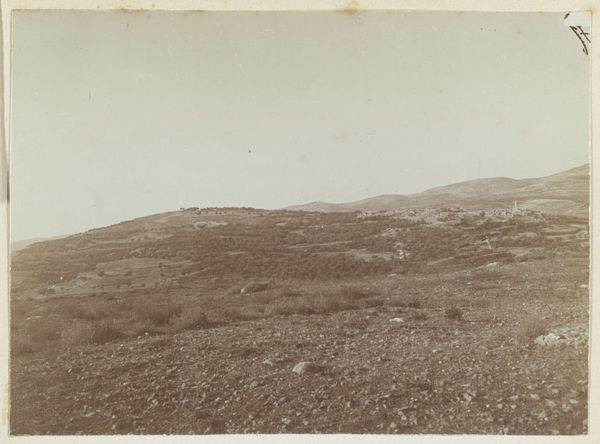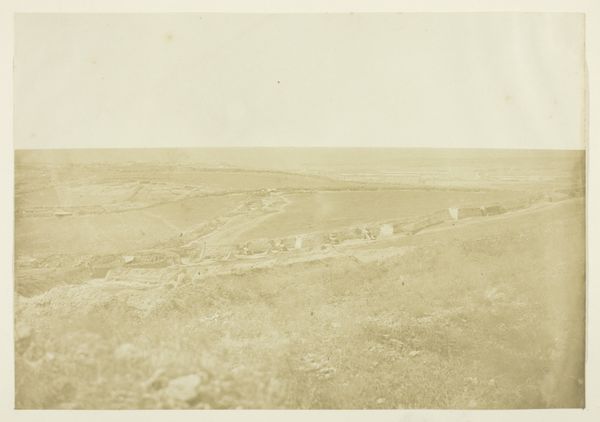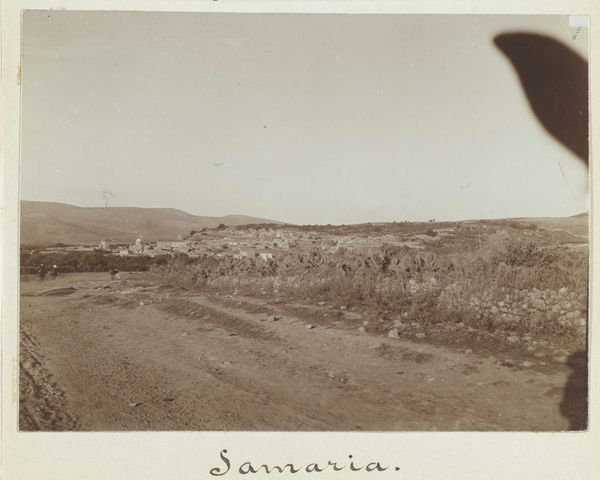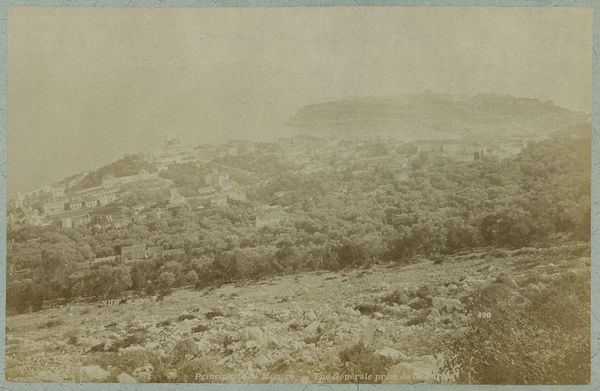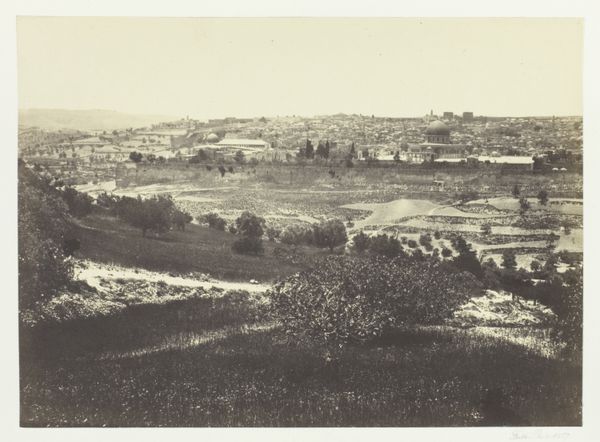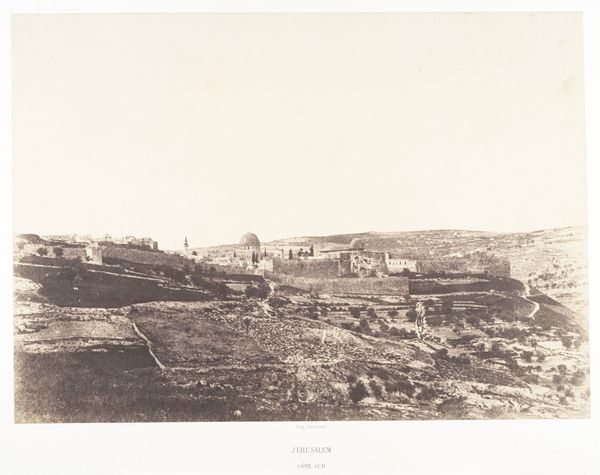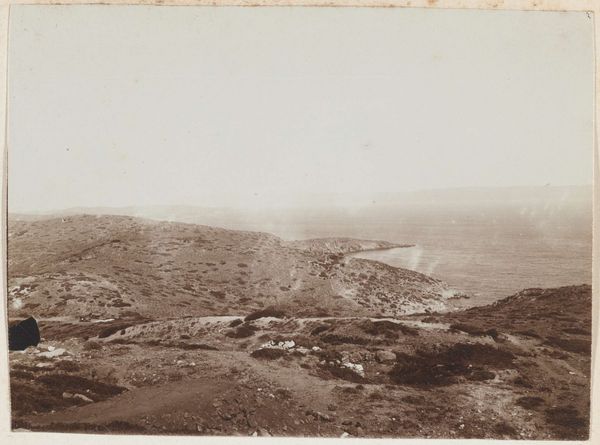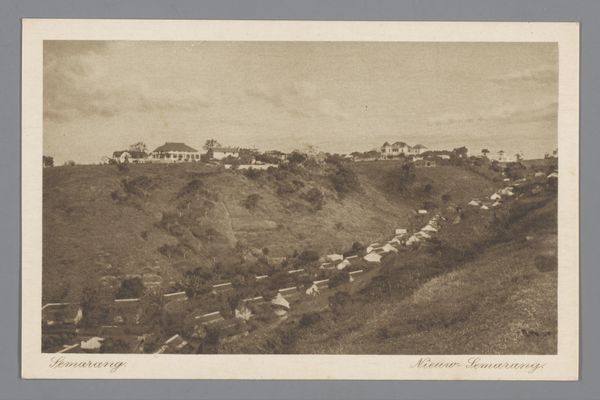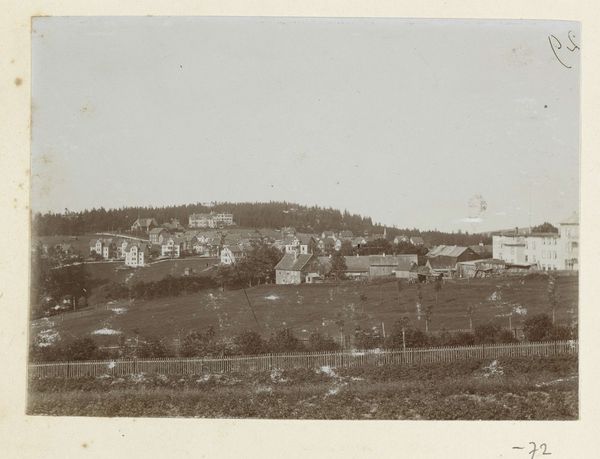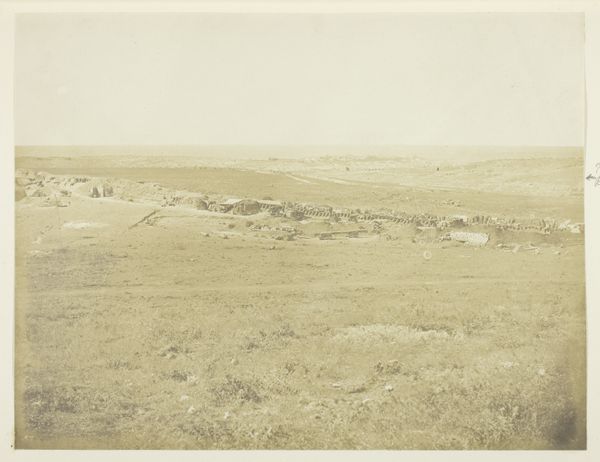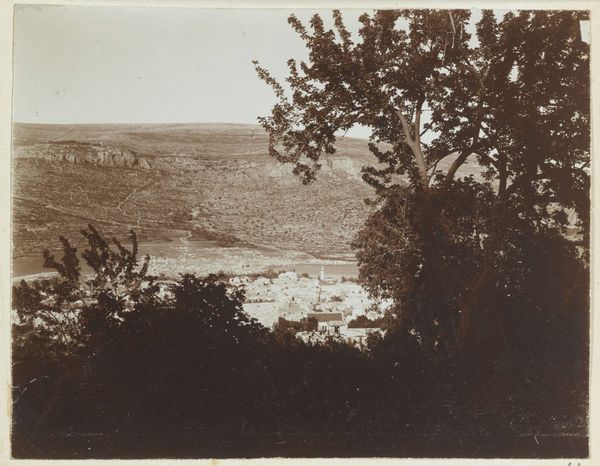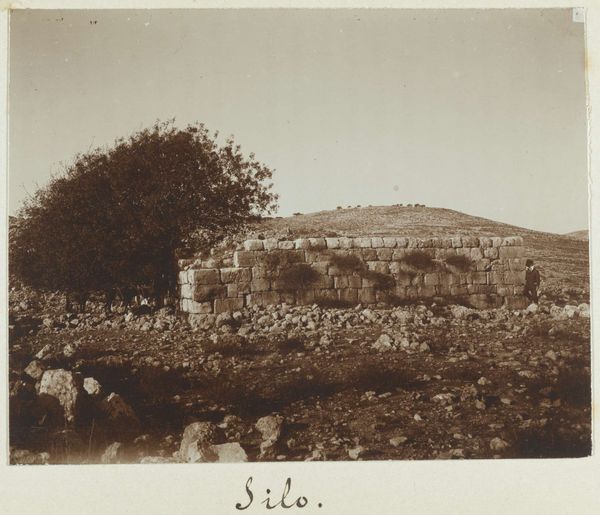
photography, gelatin-silver-print
#
landscape
#
photography
#
mountain
#
gelatin-silver-print
Dimensions: height 81 mm, width 107 mm
Copyright: Rijks Museum: Open Domain
Editor: So, this gelatin-silver print is titled "View in the Lebanon mountain range," taken in 1898 by Johannes Lodewijk Heldring. The tones create a feeling of distance, almost as if looking into the past itself. What stories do you think are embedded within this landscape? Curator: Notice how the landscape isn’t simply topographical; it’s terraced, inhabited. Do you see the small white buildings dotting the hillside? These aren't just structures; they're signifiers of human presence, perseverance even. The landscape holds centuries of stories of cultures that shaped, and were shaped by, this environment. This image, in that sense, is like a palimpsest, bearing traces of multiple narratives. Editor: That’s interesting. It feels almost like the mountain itself is a kind of symbol then, for resilience, perhaps? Curator: Precisely. Mountains, across cultures, frequently represent stability, endurance, even the sacred. They can embody a connection between the earthly and the divine, reflecting our enduring need for grounding in something bigger than ourselves. Editor: So Heldring's choice to focus on this view, could it be interpreted as capturing more than just a physical space? Was he also trying to say something about the spirit of the people connected to it? Curator: That's an excellent question. His careful composition guides the viewer's eye through a lived-in history. Photography at this time, for example, was still seen as proof – perhaps he saw the symbolism inherent in such a landscape. Perhaps it documents more than his experience alone, maybe he’s looking back at cultural memory made visible. Editor: That is a powerful thought. Looking at it now, it feels like I’m peering into a collective memory, solidified in silver. Curator: Exactly. It reminds us that landscapes are not simply passive backdrops but active participants in our shared story.
Comments
No comments
Be the first to comment and join the conversation on the ultimate creative platform.
